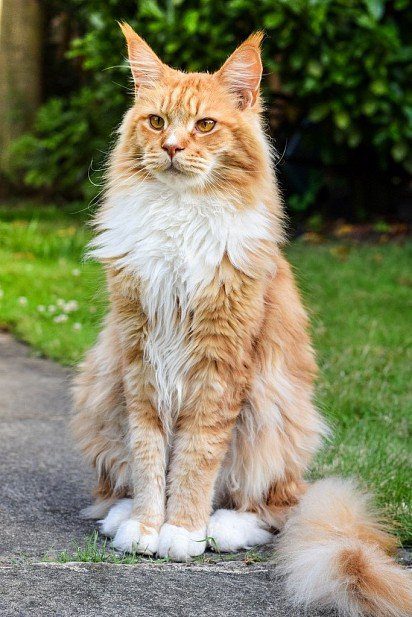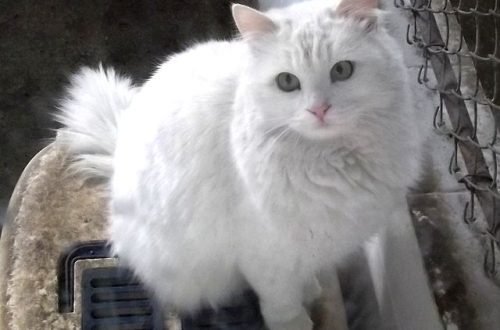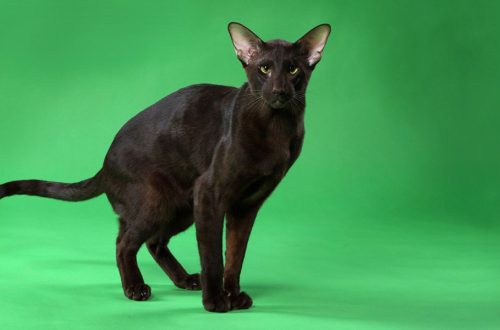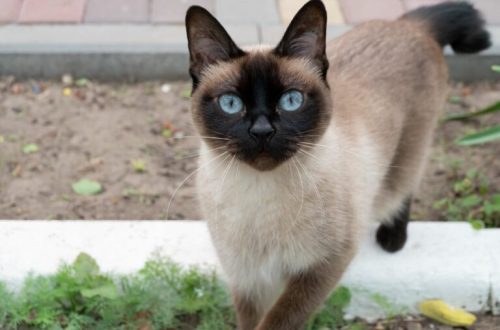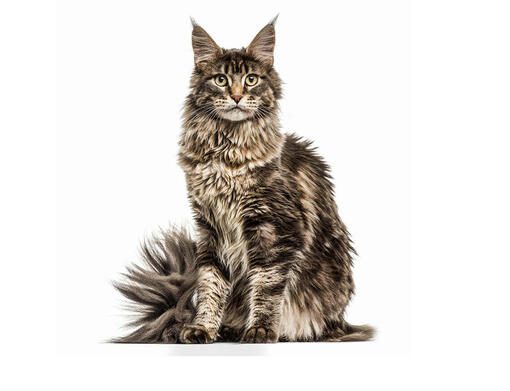
Maine Coon
Other names: Maine raccoon cat , coon
Maine Coon is a native breed of American cats, characterized by large size and impressive body weight. Representatives of the breed are reliable friends and companions, able to quickly win the love of the whole family.
Contents
- Characteristics of Maine Coon
- Basic moments
- History of the Maine Coon
- Video: Maine Coon
- Appearance of Maine Coons
- Photo of an adult Maine Coon
- Maine Coon character
- Education and training
- Maine Coon Care and maintenance
- Maine Coon health and disease
- How to choose a kitten
- Photo of Maine Coon kittens
- How much is Maine Coon
Characteristics of Maine Coon
| Country of origin | USA |
| Wool type | Longhair |
| Height | 30-40 cm at the withers, 1 m long |
| Weight | 4–10 kg |
| Age | 12–15 years old |
Basic moments
- Maine Coons are the giants of the cat world. The weight of an adult male can reach from 7 to 12 kg, cats – from 4 to 7.5 kg.
- Maine Coon owners like to call their pets simply Coons.
- Despite the presence of a rich “fur coat”, representatives of this breed do not need professional grooming and are able to do with home combing.
- Coons are not phlegmatic and will gladly support any game, if it is started in the morning or in the evening. But in the daytime, animals prefer to take a nap peacefully.
- Maine Coons are considered to be one of the best family breeds. They are equally easy to take root in houses and apartments and do not declare war on other representatives of the fauna, forced to share a common territory with them.
- With age, representatives of this breed “grow” an incredible sense of dignity, selflessly indulging in regal reclining on all free (and sometimes busy) horizontal surfaces in unexpected poses.
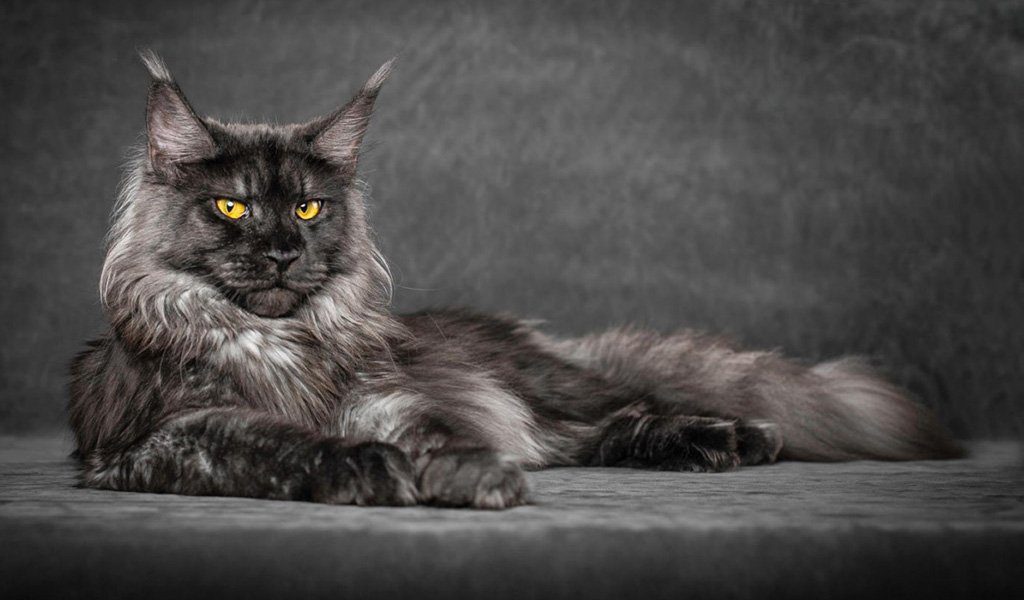
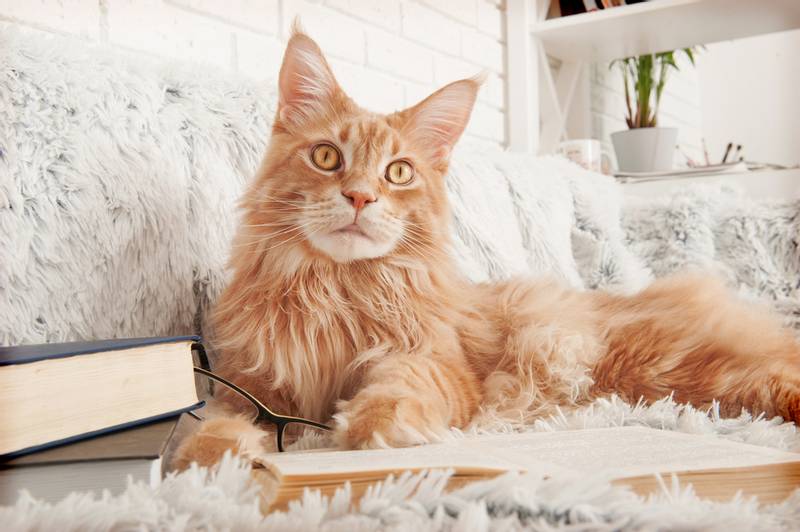
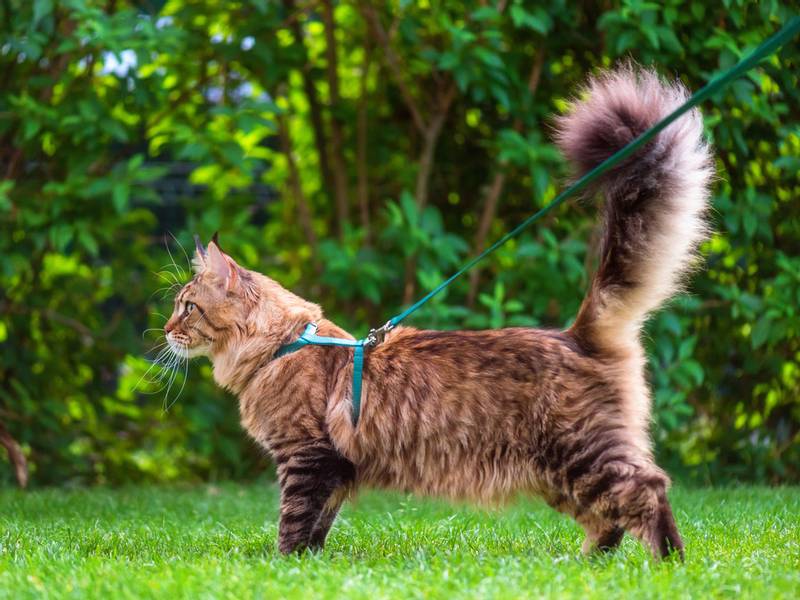
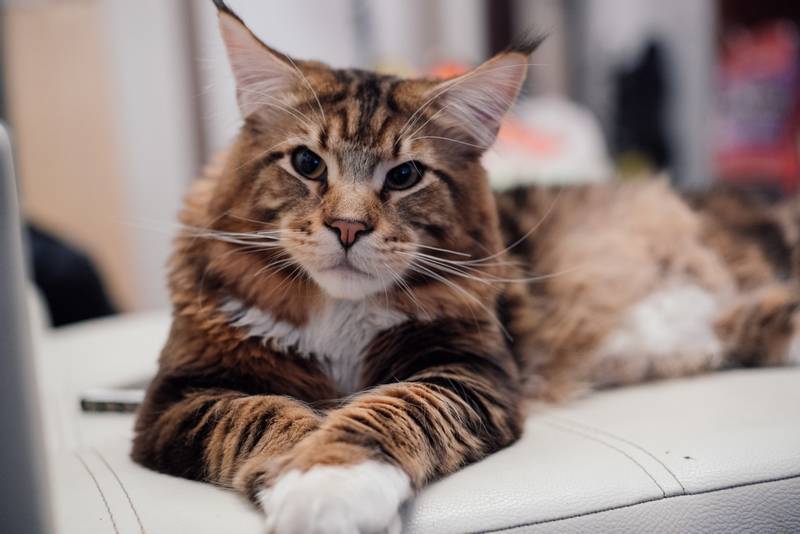
Maine Coons are plus-sized cats, wise, good-natured, with soft fluffy fur and amusing “tassels” on the ears. Born hunters and strategists, they join active games with pleasure, but at the same time they carefully dose physical activity, interspersing periods of vigorous activity with passive rest. These charming giants have a developed intellect, but they are absolutely not vindictive. They masterfully “read” the emotional mood of a person by his voice and facial expression, so they are always aware of when and from which side to approach the owner for their portion of affection.
History of the Maine Coon
The world learned about the existence of Maine Coons from American breeders. The name of the breed is translated as “Manx raccoon”. And if everything is clear with the first term in this phrase (“Main” – from the name of the American state of Maine), then the second requires clarification. The unusual striped color and fluffy tails of Maine Coons gave rise to a legend among breeders that the breed was obtained by crossing a feline with a raccoon. The bike remained a bike, but the word “kun” (short for the English racoon – raccoon) still stuck to the breed.
The most beautiful version of the appearance of gigantic cats in North America can be considered the legend of the failed escape of Queen Marie Antoinette. Expecting reprisals from the French revolutionaries, the wife of Louis XIV was about to flee to the American continent and, as a safety net, sent a ship in front of her with things dear to her heart, including her beloved long-haired cats. The mustache-tailed cargo sailed safe and sound to the shores of New England and, freely interbreeding with local short-haired cats, gave rise to a new breed, which soon settled throughout the entire state.
Modern experts tend to believe that the history of the origin of the Maine Coon “race” is much more prosaic. Cats were brought to America a long time ago, but they were mostly short-haired individuals. Long-haired cats arrived on the continent much later, along with the first settlers from the Old World. As a result, having found themselves in favorable conditions for free crossing, the native inhabitants and the “visitors” representatives of the caudate-whiskered brethren became the ancestors of a new variety of large long-haired cats.
A real pioneer in the development of the Maine Coon breed was a cat named Captain Jenks from the Marine Cavalry. This fluffy giant caused an indescribable delight of the audience in 1861, being noted at cat shows in Boston and New York and eclipsing the then popular Angoras . But by the 20th century, the Manx giants had lost their positions and were supplanted by the Persians and Siamese for almost half a century.. After the end of World War II, the Kuns reasserted themselves, however, at that time only within the American continent. In 1953, the breed acquired its own official club, and in 1968 the first association of lovers and breeders of “Manx raccoons” Maine Coon Breeders and Fanciers Association / MCBFA was founded. As for Europe, the Kuns reached it only in the 70s of the last century.
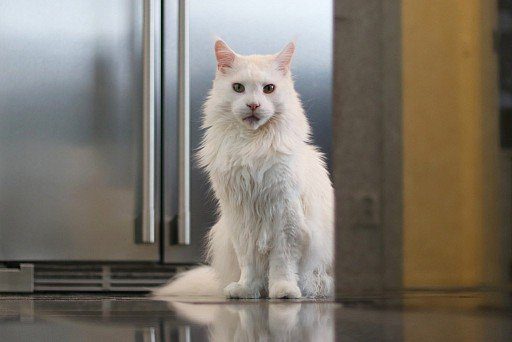
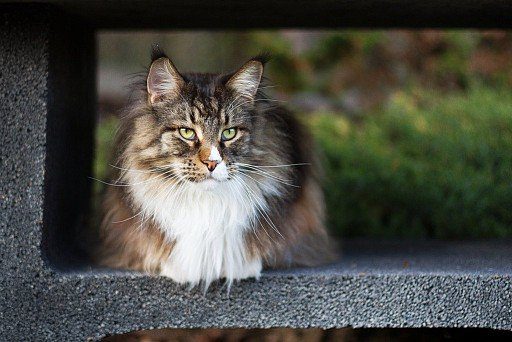
Video: Maine Coon
Appearance of Maine Coons
The appearance of the glorious Maine Coon family was significantly influenced by the climate of Maine: it is very difficult to survive in the conditions of a cold and snowy continental winter without a thick undercoat. A wide paw, protected by additional tufts of wool, is also a useful device that helps to glide over the ice crust without falling into the snow. Well, the impressive size in the conditions of hunting for small animals is an invaluable advantage. As for the modern representatives of the breed, their appearance could not but be affected by the passion of European breeders for extremization. Today’s Maine Coons have significantly increased in size, their muzzles have become even more elongated, and their ears have grown significantly.
Head
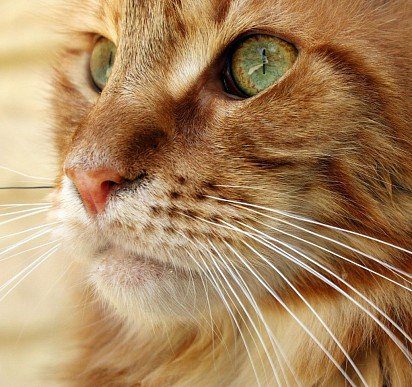

Massive, noticeably elongated in length, with a relief profile, high cheekbones and a medium-length nose. Since the ancestors of modern Maine Coons hunted by catching rodents, they often had to “dive” for prey into holes, which became the main prerequisite for the formation of a somewhat elongated skull shape.
Eyes
The eyes are rounded, wide and slightly obliquely set. The hue of the iris varies from green to rich yellow and is in harmony with the color of the animal.
Ears
Large size, with a wide base and a slight forward tilt. A distinctive feature is “lynx tassels” and “brushes” peeking out of the ear flap. It was the outstanding size of the auricle that helped the Maine Coons become excellent mousers, for which the breed is especially loved by American farmers. The skin on the ears is thick, protected by dense hair, the cartilage structure is dense. For maximum preservation of heat and protection of hearing organs, Coons use an ancient technique: the animal presses its ears tightly to the head, as if folding them, which prevents the penetration of icy air into the funnel.
Maine Coon Neck
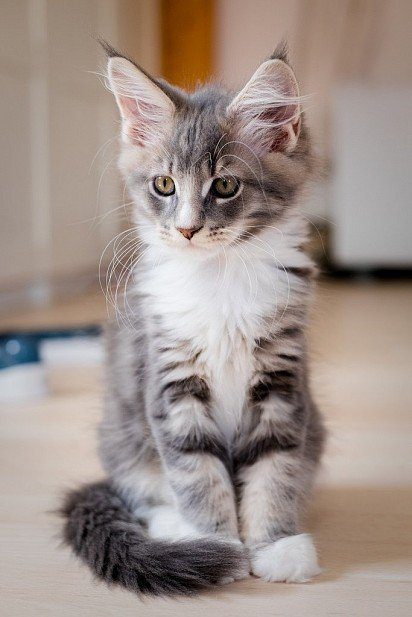

The neck of the Maine Coon is strong, muscular, of medium length, decorated with lush and long hair. Among breeders, individuals with a neck “collar” reaching to the ear flaps are especially valued.
Body
Elongated, close to a rectangle in shape, with well-developed muscle mass. The chest is wide enough, the shape of the back is horizontal.
limbs
Tall, muscular and very strong. Set wide.
Paws
Massive, rounded, protected by a dense “edge”.
Tail
The tail of the Maine Coon is long (equal in size to the length of the body), with a wide base, without kinks. It is covered with dense wool, under which a dense water-repellent undercoat is hidden. In extreme weather conditions, the tail acts as a natural heater: the animal wraps it around the body, thereby protecting itself from the cold.
Maine Coon Wool
The Maine Coon’s coat is long (from 10 to 15 cm), but heterogeneous, gradually increasing in volume in the direction from the shoulders to the stomach. The most lush wool in the area of \u200b\u200bthe so-called “panties”. In the back area, the cover is more rigid with a predominance of guard hairs. The belly and sides are protected by a soft downy undercoat, the main purpose of which is a warming and water-repellent function.
Color
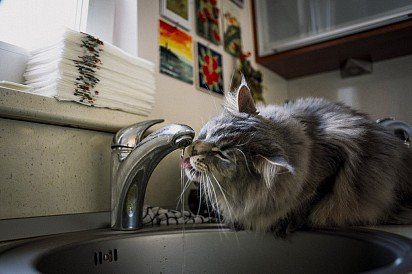

Individuals bred in nurseries in different countries can vary quite a lot both in color and in size. Recently, cats of any color are allowed to participate in exhibitions, with the exception of point, lilac and chocolate. At the same time, agouti, brindle black, harlequin black and white (the latter version is widespread in Russia) are considered classic “identifying shades” of coons.
Possible vices
The discrepancy between the appearance of the Maine Coon and generally accepted standards automatically excludes him from the ranks of the representatives of the show class. In other words, the way to exhibitions is closed to such individuals. The reason for “weaning” a cat from participating in various competitions may be insufficiently fluffy fur in the abdomen, too short a tail, small animal sizes, spots and specks on the fur, relief shape of the nose (the presence of a noticeable depression in its middle), wide-set ears, uniform length of hair throughout the body. Such a genetic anomaly as polydactyly (the presence of an excessive number of fingers on the paws of a cat) is also considered a good reason for a ban on the participation of an animal in public events. At one time, this mutation was widespread among Maine Coons, which is why it received the status of the main defect of the breed.
Photo of an adult Maine Coon
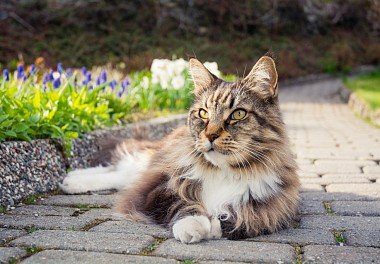

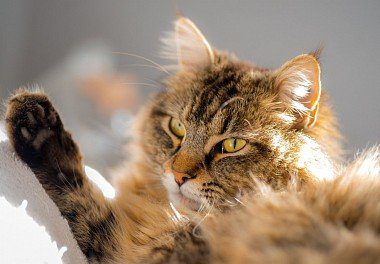

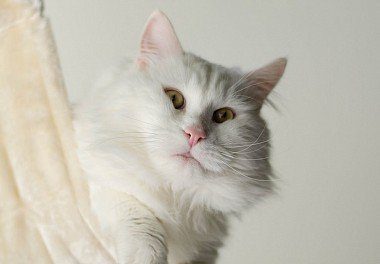

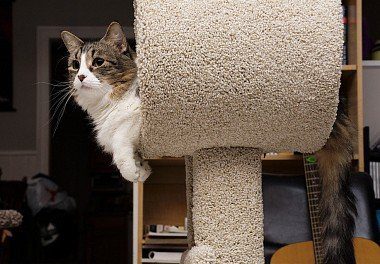

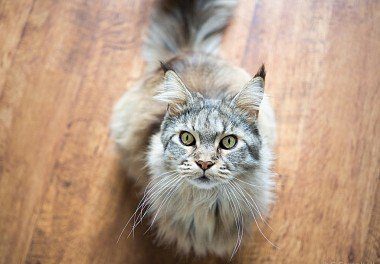

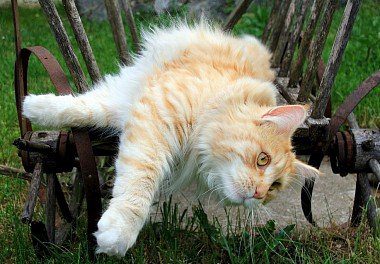

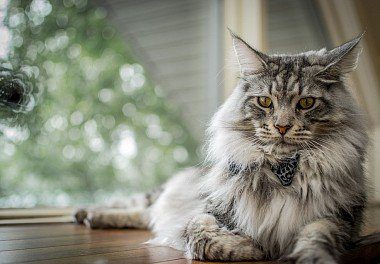

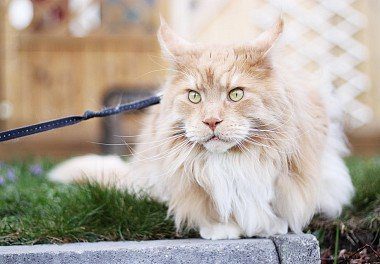

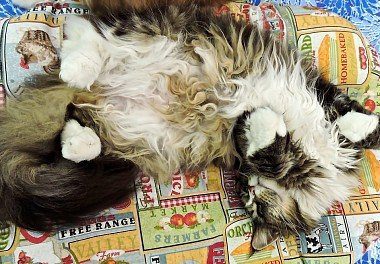

Maine Coon character
Maine Coons are often referred to as companion cats. They are friendly, moderately calm, but at the same time they are quite serious and are unlikely to appreciate familiarity. These giants will prefer a warm place at their side or at the feet to the knees of the owner, which is why representatives of this breed are often compared with dogs. Maine Coon cats easily take root in the family, but at the same time they will definitely single out one person, whom they will follow with a tail. Another remarkable feature of the breed in every sense is a thin voice that does not fit in with such a formidable appearance, thanks to which coons often become heroes of funny videos on the Internet. Cats rarely meow, but often make unusual sounds similar to purring.
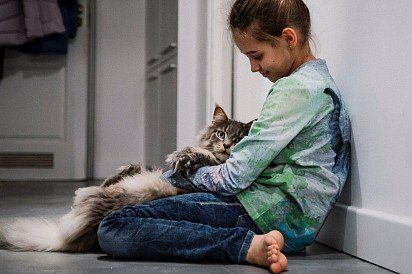

As for the typical cat pranks, because of the gigantic size of the cats, they can take on the scale of a natural disaster. Elephant stomping, overturned flower pots and broken cups – every breeder is not immune from such surprises. The only thing stopping the “Manx raccoons” from turning your apartment into a post-apocalyptic landscape is a calm temperament and a passionate love for daytime sleep. Many individuals show a strong craving for “water attractions”, so if you want to keep the bathroom in relative order, it is better not to let the coons into it.
Maine Coons are unobtrusive cats who value their own independence very much. The last feature is especially pronounced in females. Animals favor tactile contact, but crushing and squeezing them will not work. The period of maximum motor activity of representatives of this breed falls on the first five years of life. Upon reaching this “venerable” age, cats begin to be a little lazy, preferring passive rest to noisy games.
Representatives of this breed quickly learn the habits of the owner, adapt to them, are happy to help and participate in his classes. With a programmer, they will sit near a computer monitor, pointe shoes will be brought to the ballerina in their teeth, a ball or boots will be brought to the football player.
Males are very caring parents; from the first days of birth, babies take care of them and are engaged in upbringing.
Maine Coons deliberately do not notice strangers in the house – guests, relatives, friends. Having got used to them, they communicate quite friendly, if they do not try to squeeze them and take them by force.
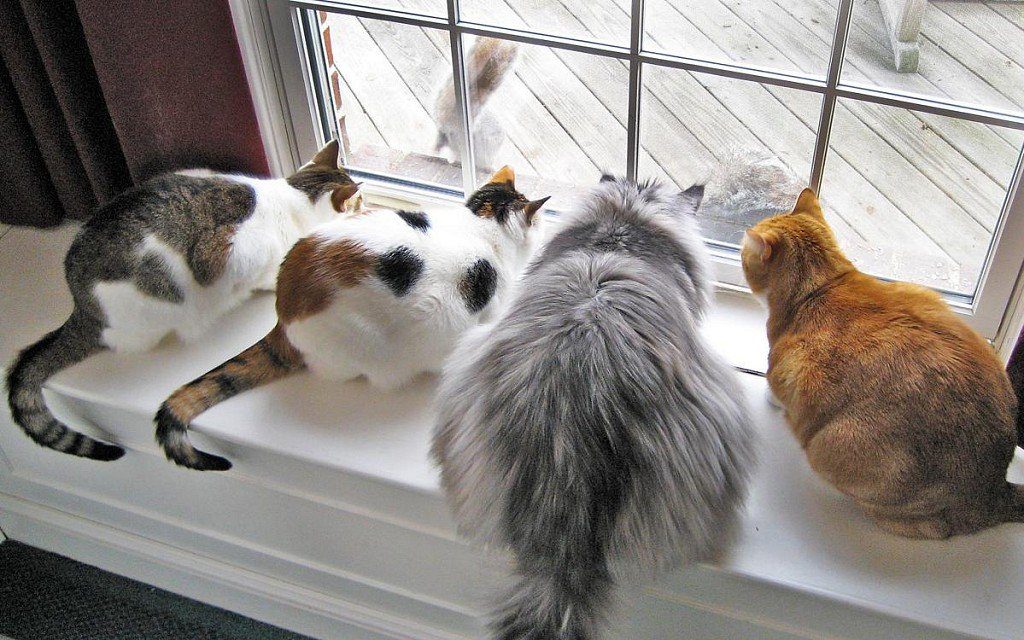

Education and training
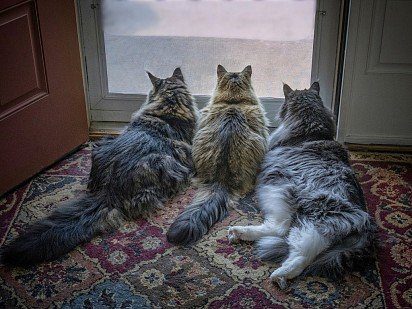

Despite the fact that modern coons no longer chase mice through the pine clearings of Maine, the genes of wild ancestors of the representatives of the breed no, no, and will remind of themselves. Accordingly, taking on the upbringing of the Maine Coon, you get the opportunity to practice self-discipline as an additional bonus.
In general, “Manx raccoons” are easy to train: they have a phenomenal memory that allows cats to easily and quickly memorize commands. Difficulties with the correct operation of the tray and the use of sofa upholstery instead of a scratching post are definitely not about Maine Coons, fluffy giants easily master these wisdom even at a very young age. From time to time, cats need to give vent to their emotions and hunting instincts, so taking part in pet games is highly desirable. Buy your Maine Coon a special ball, a toy mouse, or tease it with a laser pointer, thereby provoking the animal’s hunting excitement.
Maine Coon Care and maintenance
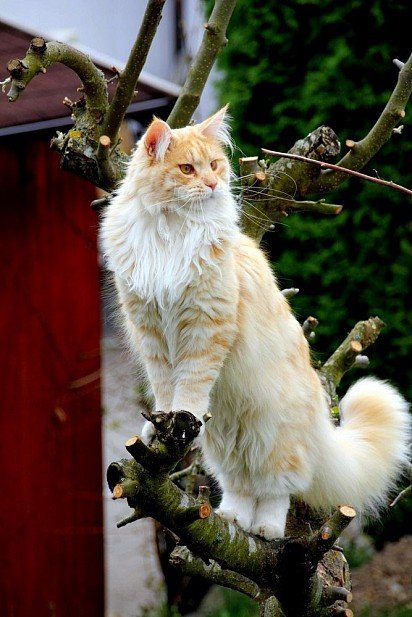

The ideal habitat for the Maine Coon is a country house where the animal can freely walk and satisfy its passion for hunting. However, breeders claim that with due diligence on the part of the owner, cats of this breed are quite capable of adapting to a city apartment. Well, it’s easy to replace excursions in meadows and forests with ordinary promenades on a harness. If there is no opportunity to take the animal out often, you should think about purchasing a high gaming complex that can brighten up your pet’s everyday life.
Hygiene
The soft fluffy coat of Maine Coon cats does not require daily care: a standard combing a couple of times a week with a round-toothed comb is enough. Close attention is paid to the areas of the sides and abdomen, where the undercoat is thicker, and therefore there is a risk of tangles. But since these areas of the Maine Coon’s body are the most sensitive, the combing procedure should be carried out with the utmost care so as not to displease the pet. Once every three weeks, the fluffy giant is supposed to arrange a bath day. Difficulties with this usually do not arise, since adult Maine Coons love to swim.
The cat’s ears should be pink inside. Periodically, they should be wiped with a soft cloth, you can gently sprinkle with an antiseptic.
Since the Maine Coon’s claws grow back very quickly, you need to give your pet a “manicure” once a week.
Toilet
Maine Coons are very careful when it comes to personal hygiene. However, a standard tray is hardly suitable for a representative of this breed: it will simply be uncomfortable for a large-sized animal in it. It is better to immediately purchase a product “for growth” with sufficient area and depth.
Maine Coon Feeding
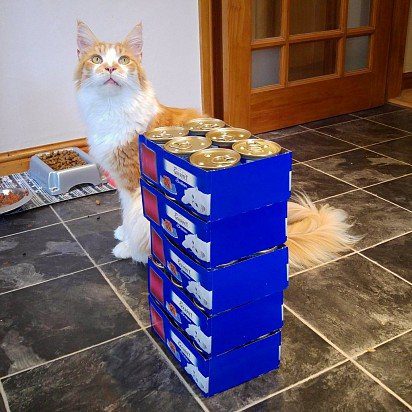

The ideal food for Maine Coons is food with a high protein content (remember the dimensions of the animal). At the same time, this breed does not need a special diet, which means that you can treat your pet with both dry food and canned food. Preference should be given to premium feeds, in which the main ingredient is meat, and not soy and wheat. It is not forbidden to sometimes treat cats with boiled chicken and beef, fish (boiled, low-fat and better sea), eggs and sour-milk products. Under a strict ban: pork, chicken and any other bones, sweet and savory dishes, potatoes.
In the case of a bowl for food, the same rule applies as with a tray: choose the option deeper and larger in diameter. The optimal material for dishes for the Maine Coon is hypoallergenic glass, ceramics and stainless steel. It is better not to abuse plastic, as close contact with it can cause allergic rashes on the cat’s chin. Water in the bowl of the animal should be present at all times, ideally the liquid should be changed twice a day.
Maine Coon health and disease
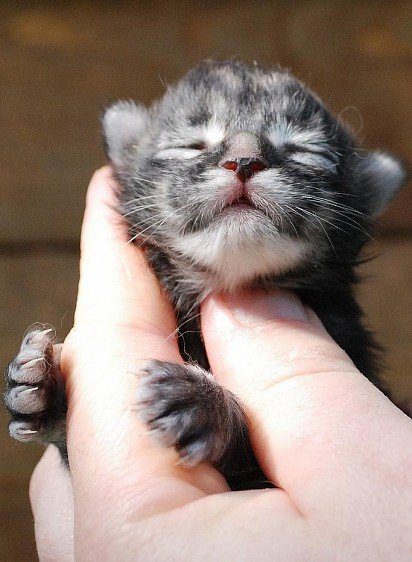

Among the feline brethren, Maine Coons are considered healthy. Indeed, “Manx raccoons” have excellent immunity and rarely get sick. The average life expectancy of a Maine Coon is 12 years, while it is not uncommon for cats to overcome the age limit of 16 years.
The most common ailments characteristic of Maine Coons, as well as representatives of other breeds, are:
- hypertrophic cardiomyopathy (manifested mainly in older individuals);
- hip dysplasia;
- polycystic kidney disease;
- spinal muscular atrophy.
Of the specific diseases that Coons are susceptible to, breeders distinguish abscesses, bald spots, bald patches and overdried skin. The causes of these ailments can be excessive abuse of water procedures, improperly selected shampoo, as well as untimely cleaning of the animal’s fur.
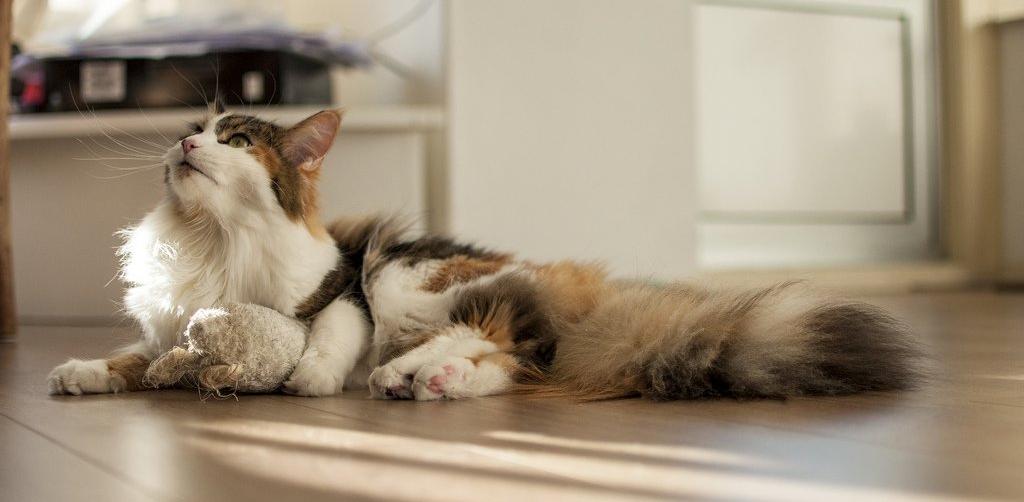

How to choose a kitten
Ideally, the future owner of the Maine Coon should be a regular at exhibitions and nurseries (especially true for those who plan to buy a show-class animal). A good help can be provided by the study of breed standards, fixed by the TICA, WCF, CFA felinological systems.
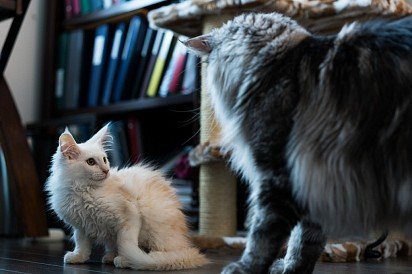

Before buying, you should decide on the gender, class and type of animal. Maine Coon cats are real intellectuals and neat, but with a strong character. Cats are more spontaneous, playful and friendly. To date, a particular breed has two branches: the classic American and European. It is worth choosing a representative of the first variety if you are looking for a charming, wide-boned creature with round eyes and a fluffy tabby coat. Europeans are distinguished by an elongated body, slanting eyes and, in general, a rather predatory appearance. Their fur is not as rich as that of their American counterparts, but the tail is noticeably longer, and the tassels on the ears are more pronounced.
Maine Coon kittens are recommended to be taken into the family at the age of 12-15 weeks. By this time, the little creature knows how to use the toilet and has already received the necessary vaccinations. It is best to opt for an active kitten who is curious and willing to make contact. Lethargy and apathy are signs of a tired, unhealthy animal.
If you want to know what type of temperament a little creature has inherited, ask the nursery staff to introduce you to his mother. If an adult seems too excited and aggressive, it is better not to risk it and choose a kitten from other, more friendly parents. Pay close attention to the coat of the animal: it should be smooth, clean and silky. Do not forget to check with the breeder the brand of food that your ward was treated to, as well as the type of toilet litter used in the cattery’s cattery trays. Knowing these points will greatly facilitate the process of adaptation of a small Maine Coon.
Photo of Maine Coon kittens
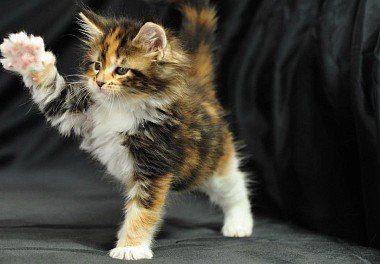

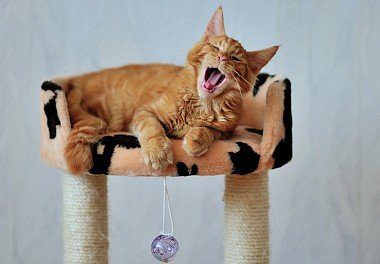

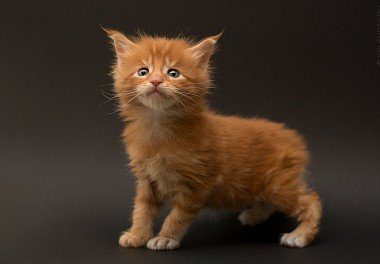

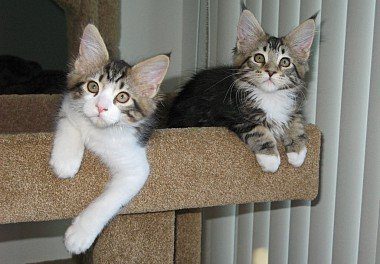

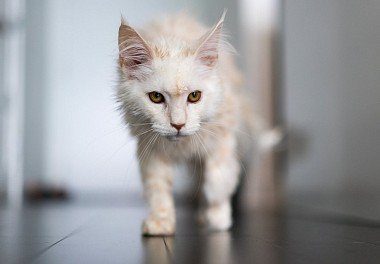

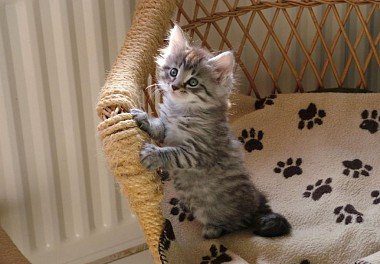

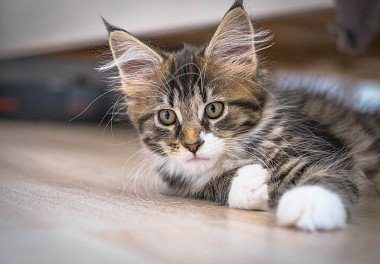

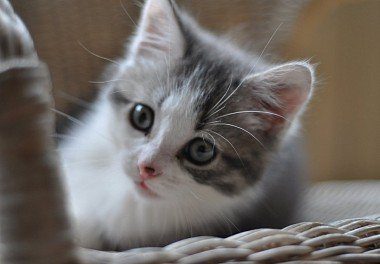

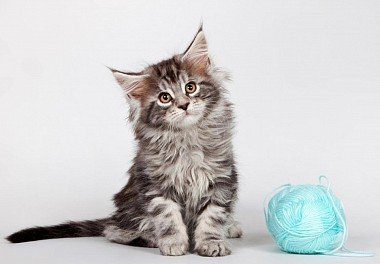

How much is Maine Coon
The main rule that applies to Manx raccoon kittens is: a cheap Maine Coon is not a Maine Coon. To date, the cost of a Maine Coon kitten fluctuates around 500 – 900$, and this is not the limit. The established price range is not a whim of the owners of nurseries, but a severe necessity, since the institution spends up to 350$ on the maintenance of one animal from the moment of its birth and when it reaches the age of three months.
The highest price tags are set for individuals of the breed class (future successors of the Maine Coon family), as well as cats of fashionable and rare colors. Of the representatives of the pet category (sterilized animals), male animals are more expensive.
It is worth buying Maine Coon kittens only in trusted places. Despite the fact that there are a lot of institutions that position themselves as serious nurseries, not all of them keep animals in the right conditions and receive the necessary veterinary assistance. The most unsuitable places to buy a kitten are bird markets and virtual bulletin boards, where animals that are very distantly related to representatives of this breed are sold under the guise of Maine Coons.





